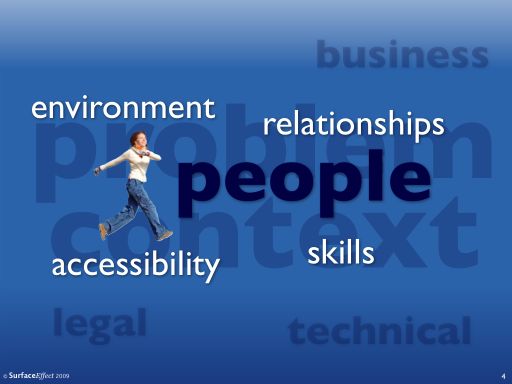The Interaction Design Process
Understanding the people who will use a product is vitally important.
The environment in which people work changes the design. For example, if a working mother needs to leave work at a set time to collect kids from school, the system should enable that and support her in keeping her context when she returns the next day.
People rarely work solo. They work in teams, and understanding the relationships within those teams is vital. Who is responsible for any decision? What are the information flows (formal and informal) between people on the team. How are decisions made when conflicts arise? All these issues have to be understood to allow the system to cater for them.
Not everyone has the same skills. Any effective system should take full advantage of the skills people do have, while providing support for those areas where people might be less adept. Over simplifying a complex system when it will be used by experts is just as bad as presenting an over-complex system to novices. The first will be frustrating - the latter baffling.
And this is also applicable with accessibility. Understanding the abilities of the people who will use a system is vital. And this is not just because of issues with disability. A noisy environment renders everyone equally deaf - and that is just as much an accessibility issue.
This was presented at the “Usability: What's the Use?” event at the CUBE in Manchester, Jan 28th, 2009.


